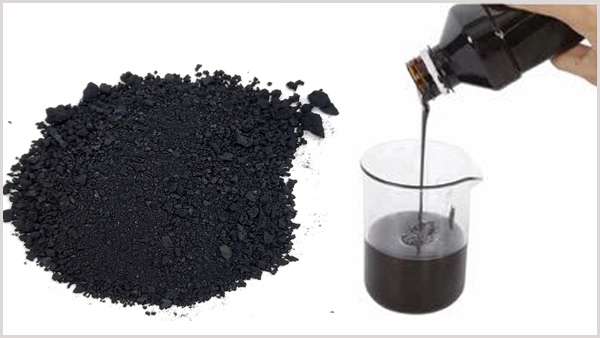china black sulfide
The Impact and Relevance of China Black Sulfide
China Black Sulfide, often synonymous with various black sulfide minerals, has gained significant attention due to its unique properties and applications across various industries. This article examines the characteristics of black sulfide, its uses, and the implications of its mining and utilization in China, a country rich in mineral resources.
What is Black Sulfide?
Black sulfide typically refers to a group of minerals that contain sulfur compounds, predominantly sulfides of metals like zinc, lead, copper, and iron. These minerals are characterized by their dark color and metallic luster. One of the most notable black sulfides is sphalerite, which is primarily composed of zinc sulfide (ZnS). Others include galena (lead sulfide) and pyrite (iron sulfide), both of which play crucial roles in various industrial processes.
In geological terms, black sulfides often occur in sedimentary and metamorphic contexts. They can be found in hydrothermal veins and as replacements in sedimentary rocks, making them an important focus for mining operations. The presence of these minerals not only indicates significant geochemical activities but also points to the potential for discovering valuable metal deposits.
Industrial Applications
The applications of black sulfides are as varied as the minerals themselves. One of the primary uses is in metallurgy, where black sulfides are smelted to produce pure metals. For instance, sphalerite is a critical source of zinc, which is vital for galvanizing iron and preventing corrosion in various applications. Galena serves as a primary source of lead, essential for batteries, radiation shielding, and various alloys.
Furthermore, black sulfides are invaluable in the field of energy. Pyrite, once considered fool’s gold, is explored for its potential uses in solar panels, owing to its semiconductor properties. As the world shifts towards more sustainable energy sources, the demand for efficient materials like pyrite is expected to rise.
china black sulfide

Environmental Considerations
Despite the economic benefits, the mining and processing of black sulfides raise significant environmental concerns. Mining activities can lead to habitat destruction, soil and water contamination, and a host of social issues affecting local communities. The extraction of these minerals often results in acid mine drainage (AMD), where sulfide minerals react with oxygen and water to produce sulfuric acid, a process that can severely impact aquatic ecosystems.
In China, where mining practices have often been less regulated, the environmental footprint of black sulfide mining has raised alarms. Local communities, scientists, and environmental activists are increasingly calling for stricter regulations and sustainable mining practices. The Chinese government has acknowledged these challenges and has begun implementing measures aimed at reducing the environmental impact of mining operations.
Future Outlook
Looking forward, the demand for black sulfide minerals is expected to increase as industries continue to innovate and seek new materials. The growing emphasis on sustainable practices will likely drive research and development into eco-friendly methods of extraction and processing. Moreover, advancements in technology may facilitate the mining of lower-grade ore bodies, making previously uneconomical deposits viable.
As global markets evolve, China plays a crucial role in the production and supply of black sulfides. Its vast reserves and established manufacturing capabilities position it as a key player in meeting the growing international demand for these minerals. However, balancing economic benefits with environmental responsibilities will be a critical challenge that stakeholders must address.
Conclusion
China Black Sulfide embodies both the promise of modern industry and the challenges of sustainable resource management. Its varied applications underscore the importance of these minerals in today's economy, while the environmental risks associated with their extraction call for a more responsible approach to mining. As the world moves toward integrating sustainability into all facets of industry, the future of black sulfide mining and utilization in China remains a topic of profound significance—one that will require cooperation among governments, industries, and communities to ensure a balanced approach to development and environmental stewardship.
-
The Timeless Art of Denim Indigo Dye
NewsJul.01,2025
-
The Rise of Sulfur Dyed Denim
NewsJul.01,2025
-
The Rich Revival of the Best Indigo Dye
NewsJul.01,2025
-
The Enduring Strength of Sulphur Black
NewsJul.01,2025
-
The Ancient Art of Chinese Indigo Dye
NewsJul.01,2025
-
Industry Power of Indigo
NewsJul.01,2025
-
Black Sulfur is Leading the Next Wave
NewsJul.01,2025

Sulphur Black
1.Name: sulphur black; Sulfur Black; Sulphur Black 1;
2.Structure formula:
3.Molecule formula: C6H4N2O5
4.CAS No.: 1326-82-5
5.HS code: 32041911
6.Product specification:Appearance:black phosphorus flakes; black liquid

Bromo Indigo; Vat Bromo-Indigo; C.I.Vat Blue 5
1.Name: Bromo indigo; Vat bromo-indigo; C.I.Vat blue 5;
2.Structure formula:
3.Molecule formula: C16H6Br4N2O2
4.CAS No.: 2475-31-2
5.HS code: 3204151000 6.Major usage and instruction: Be mainly used to dye cotton fabrics.

Indigo Blue Vat Blue
1.Name: indigo blue,vat blue 1,
2.Structure formula:
3.Molecule formula: C16H10N2O2
4.. CAS No.: 482-89-3
5.Molecule weight: 262.62
6.HS code: 3204151000
7.Major usage and instruction: Be mainly used to dye cotton fabrics.

